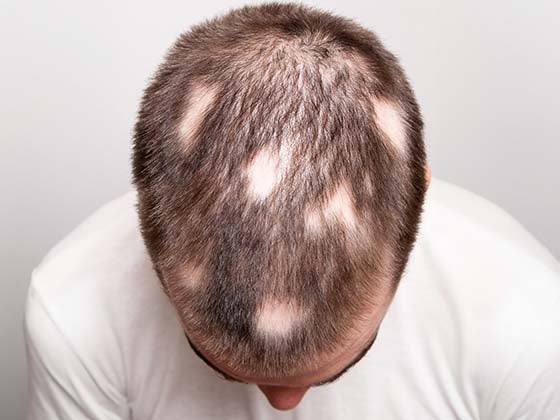Ascorbyl glucoside is a vitamin C derivative that has numerous skin-health benefits. This blog discusses the primary benefits of ascorbyl glucoside for good skin.
Understanding Ascorbyl Glucoside: A Stable Vitamin C Derivative

Ascorbyl glucoside is regarded in cosmetics because of its stability, gentleness, antioxidant properties, skin-brightening effects, and capacity to promote collagen formation. It is a dependable alternative for introducing vitamin C into skincare routines, particularly for people with sensitive skin or who prefer a more stable version of the vitamin.
What is Ascorbyl Glucoside?
Ascorbyl glucoside is a water-soluble derivative of vitamin C (ascorbic acid) in which an ascorbic acid molecule is linked to a glucose molecule. This chemical complex has various advantages over pure ascorbic acid, including stability, slow release of vitamin C, gentleness on the skin, antioxidant properties, skin brightening, and collagen synthesis. Its versatility and compatibility with other skincare components make it a popular ingredient in formulations designed to promote brighter, more youthful-looking skin.
The Science Behind Ascorbyl Glucoside in Skincare
Ascorbyl glucoside is a stable and effective approach to adding vitamin C into your skincare routine. Its ability to provide antioxidant protection, prevent melanin development, and stimulate collagen synthesis makes it an important element for maintaining healthy, glowing skin. Ascorbyl glucoside, which has been supported by scientific research and clinical tests, is a popular ingredient in modern skincare formulations aimed at addressing diverse skin conditions and promoting general skin health.
Comparing Ascorbyl Glucoside with Other Vitamin C Derivatives
Ascorbyl glucoside is notable for its stability, mild demeanor, and progressive release of vitamin C effects. It is appropriate for people with sensitive skin and provides long-term skin lightening and anti-aging benefits via prolonged collagen stimulation and antioxidant protection. However, when selecting a vitamin C derivative for skincare, consider your skin's demands, the formulation's stability, and the intended advantages (for example, immediate vs. gradual effects).
The Skin Benefits of Ascorbyl Glucoside

Ascorbyl glucoside provides various skin benefits due to its ability to gradually release vitamin C (ascorbic acid) and its stability in skincare products. Here are the primary skin benefits of ascorbyl glucoside:
-
Ascorbyl glucoside, like other forms of vitamin C, has strong antioxidant properties. It helps to neutralize free radicals produced by environmental stresses including UV radiation and pollution. This antioxidant action protects the skin against oxidative stress, which can cause premature aging, wrinkles, and fine lines.
-
Ascorbyl glucoside reduces melanin synthesis in the skin. Melanin causes pigmentation and black patches. Ascorbyl glucoside reduces melanin synthesis, which helps lighten hyperpigmentation, age spots, and acne scars, resulting in a more even skin tone and brighter complexion over time.
-
Vitamin C is necessary for collagen formation in the skin. Collagen is a protein that helps the skin maintain its structure and flexibility. Ascorbyl glucoside increases collagen formation, which improves skin elasticity, firmness, and texture. This can help to decrease the appearance of fine lines and wrinkles.
-
According to studies, ascorbyl glucoside may increase skin hydration and reinforce the skin barrier. A strong skin barrier is essential for keeping moisture in and guarding against environmental irritants and microorganisms.
-
Ascorbyl glucoside has anti-inflammatory effects that can relax and soothe inflamed skin. This makes it ideal for people with sensitive or acne-prone skin because it reduces redness and inflammation.
-
Ascorbyl glucoside is well tolerated by most skin types, including sensitive skin. Its gentle nature makes it an appropriate alternative for people who are sensitive to more potent forms of vitamin C, such as L-ascorbic acid.
-
Ascorbyl glucoside has a longer shelf life than L-ascorbic acid, which is unstable and easily oxidized. This stability guarantees that the product's efficacy remains constant throughout time, offering consistent skin benefits.
Antioxidant Protection: Shielding Your Skin from Free Radicals
Antioxidant protection is essential for protecting your skin against free radicals, which are unstable chemicals produced by a variety of environmental causes like UV radiation, pollution, and even normal metabolic activities within the body. To maximize the advantages of antioxidants on your skin:
-
Choose Formulations: Look for serums, moisturizers, and treatments that contain stable antioxidants.
-
Combine with Sunscreen: Combining antioxidants with broad-spectrum sunscreen provides total protection against UV-induced free radical damage.
-
Consistency: Consistency is essential for achieving long-term results. Antioxidants work best when added to a daily skincare regimen.
-
Consult a Dermatologist: Get personalized advise on skincare products and regimens based on your skin type and issues.
Collagen Production: Promoting Firm and Youthful Skin

Increasing collagen production is important for keeping firm, young skin. Incorporate collagen-boosting skincare products such as vitamin C and retinoids into your daily routine, eat a protein- and vitamin-rich diet, protect your skin from UV damage, and consider professional treatments to support collagen synthesis and skin elasticity over time. These efforts can help you achieve a smoother, more youthful complexion while also reducing the outward indications of aging.
Reducing Hyperpigmentation for an Even Skin Tone
Reducing hyperpigmentation is a popular skincare goal for achieving a more balanced complexion. Hyperpigmentation is produced by an excess of melanin, resulting in dark spots, patches, or uneven skin tone. Here are some effective ways to reduce hyperpigmentation and achieve a more uniform complexion:
-
Vitamin C (Ascorbic Acid or Ascorbyl Glucoside): Vitamin C inhibits tyrosinase, the enzyme that produces melanin, helping to lighten dark spots and even out skin tone. To address areas of hyperpigmentation, apply a vitamin C serum or cream once a day, ideally in the morning.
-
Hydroquinone: A strong skin-lightening agent that inhibits melanin synthesis. Available in both prescription and over-the-counter forms. Use as prescribed by a dermatologist, usually for a limited time to avoid side effects.
-
Retinoids (Retinol): Increases cell turnover, which promotes the clearance of pigmented skin cells and reveals brighter, more even-toned skin. Use retinoid creams or serums at night. Begin with a low dose to reduce irritation, then gradually increase as tolerated.
-
Niacinamide (Vitamin B3): Helps to minimize pigment transfer to skin cells, brightening the overall complexion. Include niacinamide-containing products in your everyday skincare routine. It is mild and appropriate for most skin types.
-
Alpha Hydroxy Acids (AHAs): Exfoliate the skin to eliminate dead skin cells and increase cell turnover, which can help reduce dark spots over time. Cleansers, toners, and serums can all benefit from glycolic or lactic acid. Begin with modest concentrations and gradually increase the frequency as your skin adjusts.
-
Kojic Acid: Inhibits tyrosinase activity, similar to hydroquinone, to lighten dark spots. Found in serums and creams, typically used once or twice daily. Combine with other treatments for enhanced efficacy.
Incorporating Ascorbyl Glucoside into Your Skincare Routine

Including ascorbyl glucoside in your skincare routine will help you get the benefits of skin brightening, antioxidant protection, and collagen support. Here's a step-by-step method for efficiently incorporating ascorbyl glucoside into your everyday skincare routine:
Morning Routine:
-
Start with a gentle cleanser suited to your skin type to remove any impurities or residue from the night.
-
If you use a toner, choose one that hydrates and balances the skin’s pH levels.
-
Apply a serum containing ascorbyl glucoside. Serums are highly concentrated and allow for better penetration of active ingredients. Dispense a pea-sized amount onto your fingertips and gently pat or massage it onto your face and neck. Allow it to absorb fully into the skin.
-
Follow up with a moisturizer to lock in hydration. Choose a moisturizer that complements your skin type (e.g., gel-based for oily skin, cream-based for dry skin).
-
Finish off with a broad-spectrum sunscreen with SPF 30 or higher. This is crucial to protect your skin from UV damage, which can worsen hyperpigmentation and premature aging.
Evening Routine:
-
Double cleanse if necessary to thoroughly remove makeup, sunscreen, and impurities from the day.
-
Use a toner to prep your skin for better absorption of subsequent products.
-
Repeat the application of the ascorbyl glucoside serum as you did in the morning. This ensures consistent delivery of vitamin C to support collagen synthesis overnight.
-
If using other treatments like retinoids or exfoliants (e.g., AHAs or BHAs), apply them after the ascorbyl glucoside serum, following product instructions and recommendations from your skincare professional.
-
Apply a nourishing night cream or moisturizer to replenish your skin’s moisture barrier while you sleep.
Selecting the Right Ascorbyl Glucoside Products

Choosing the correct ascorbyl glucoside products requires careful consideration of various criteria to ensure efficacy and compatibility with your skin type and problems. Here's a guide to determining the best ascorbyl glucoside products for your beauty routine:
-
Concentration of Ascorbyl Glucoside: Look for goods that have a high concentration of ascorbyl glucoside in their ingredient list. Effective concentrations typically range between 1% and 5%.
-
Stability and Packaging: Ascorbyl glucoside is more stable than pure ascorbic acid, but it can decay over time when exposed to air and light. To reduce oxidation, choose products in opaque or dark-colored packaging that is airtight or has pump dispensers.
-
Formulation Type: Serums are highly concentrated and help in the absorption of ascorbyl glucoside into the skin. They are perfect for addressing specific symptoms, such as hyperpigmentation and fine wrinkles. These formulations are ideal for persons with dry skin or for introducing ascorbyl glucoside into your moisturizing regimen.
-
Additional chemicals: Look for products that include complementing chemicals like hyaluronic acid for hydration, niacinamide for further skin-brightening benefits, or antioxidants like vitamin E for better free radical protection.
-
Skin Type Compatibility: Ascorbyl glucoside is good for most skin types, including sensitive skin. However, if you have extremely sensitive skin, look for products labeled as gentle or made specifically for it.
-
Reviews and Reputation: Read customer reviews and consult respected skincare sites to determine the product's performance and verify it matches your expectations.
Tips for Using Ascorbyl Glucoside with Other Skincare Ingredients

When combining ascorbyl glucoside with additional skincare components, compatibility, and ideal application methods must be considered to maximize benefits while maintaining efficacy. Here are some tips for including ascorbyl glucoside in your skincare routine alongside other common skincare ingredients:
-
Vitamin C (L-Ascorbic Acid): Ascorbyl glucoside and L-ascorbic acid (pure vitamin C) can work well together in skincare routines. They both give antioxidant protection and promote collagen synthesis. If utilizing both, use L-ascorbic acid in the morning for its powerful antioxidant properties. To continue boosting collagen formation and skin lightening, use ascorbyl glucoside later in the day or the evening.
-
Retinoids (Retinol, Tretinoin): Retinoids can be harsh on the skin and may break down vitamin C compounds. To reduce potential discomfort while maintaining efficacy, use retinoids in the evening and ascorbyl glucoside in the morning. If you're new to retinoids, start with a modest dosage and gradually increase the frequency to avoid severe dryness or irritation.
-
Niacinamide (Vitamin B3): Niacinamide and ascorbyl glucoside can work together to brighten the skin and improve its texture. Both ingredients are generally well tolerated and can be administered concurrently in the same regimen. If sensitivity arises, use niacinamide before ascorbyl glucoside, or alternate between the two.
-
Alpha Hydroxy Acids (AHAs) and Beta Hydroxy Acids (BHAs): AHAs (e.g., glycolic acid, lactic acid) and BHAs (e.g., salicylic acid) aid in the exfoliation of dead skin cells, increasing the absorption and efficacy of ascorbyl glucoside. Use AHAs/BHAs in the evening and ascorbyl glucoside in the morning to balance exfoliation with antioxidant protection.
-
Sunscreen: Ascorbyl glucoside and other vitamin C compounds can make skin more sensitive to the sun. Even if you use ascorbyl glucoside in the morning, make sure to apply a broad-spectrum sunscreen during the day.
Addressing Common Concerns: Sensitivity and Effectiveness
When introducing new skincare compounds such as ascorbyl glucoside into your routine, it is important to address sensitivity and effectiveness concerns for best results. Here's how to address these typical concerns:
Sensitivity
-
Before using any new product, especially if you have sensitive skin, perform a patch test. Apply a small amount of the product to a discreet area of skin, such as behind your ear or on your inner forearm, and wait 24 hours to check for any adverse reactions.
-
Introduce ascorbyl glucoside slowly into your routine. Start with a lower frequency, such as every other day, and gradually increase to daily use as your skin builds tolerance.
-
When combining ascorbyl glucoside with other active ingredients (like retinoids or acids), introduce one product at a time to monitor your skin's reaction. If irritation occurs, consider using them at different times of the day (e.g., ascorbyl glucoside in the morning and retinoids at night).
-
Ensure your skin is well-hydrated. Use a gentle, non-comedogenic moisturizer to help soothe and protect the skin barrier, reducing the potential for irritation.
-
Steer clear of harsh cleansers, scrubs, or products containing high concentrations of alcohol or fragrance, as these can exacerbate sensitivity.
Effectiveness
-
Apply ascorbyl glucoside on clean, dry skin. Follow up with a moisturizer to lock in the benefits and protect your skin barrier.
-
Consistency is key to seeing results. Use ascorbyl glucoside regularly as part of your daily skincare routine. It may take several weeks to notice visible improvements in skin tone and texture.
-
Use a broad-spectrum sunscreen with SPF 30 or higher every day. Sun exposure can counteract the benefits of ascorbyl glucoside and worsen hyperpigmentation. Sunscreen protects your skin from UV damage and helps maintain an even skin tone.
-
Combine ascorbyl glucoside with other beneficial ingredients like niacinamide, hyaluronic acid, and antioxidants to enhance its effects. Niacinamide, for example, can help with brightening and reducing inflammation, complementing the benefits of ascorbyl glucoside.
-
Choose ascorbyl glucoside products in stable formulations and proper packaging to ensure the ingredients remain effective. Look for products in opaque, airtight containers to minimize exposure to air and light, which can degrade the active ingredient.
-
If you're unsure about how to use ascorbyl glucoside or if you're not seeing the desired results, consult with a dermatologist. They can provide personalized recommendations and suggest additional treatments if necessary.
Personalizing Your Skincare with Ascorbyl Glucoside

Personalizing your skincare regimen with ascorbyl glucoside entails adjusting its use to your unique skin type, issues, and goals. Here are some recommendations to help you customize your regimen for the best results:
-
Before introducing new products into your routine, always test them on a small patch of skin to ensure no unpleasant reactions occur.
-
Depending on how your skin reacts, you may need to change the frequency of application. Begin with every other day and progress to everyday use as your skin develops tolerance.
-
If you have ongoing skin issues or are unsure about product combinations, see a dermatologist for personalized guidance.
By understanding your skin type and specific concerns, you can effectively personalize your skincare routine with ascorbyl glucoside to achieve a healthier, more radiant complexion.
















